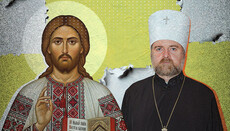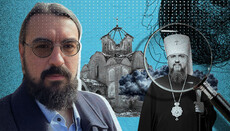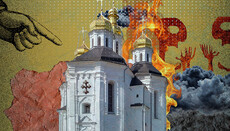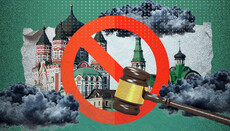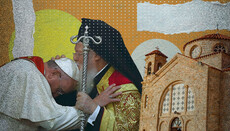Christians against persecution: past and present
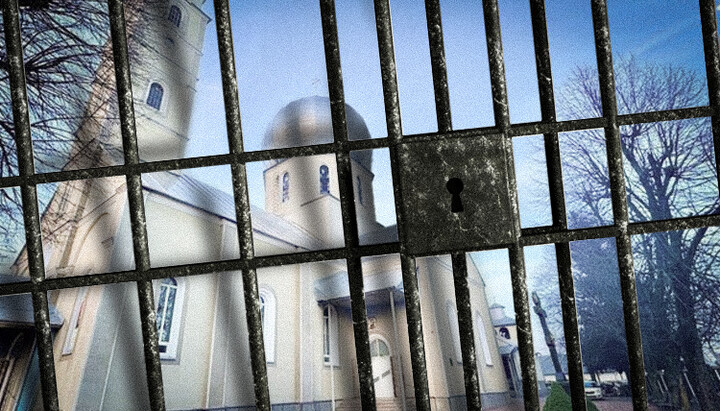
Orthodox Christians in Transcarpathia prevented TCC representatives from mobilizing two UOC priests. What can this story teach us today?
The history of Orthodoxy is full of examples where external forces tried to destroy the Church. However, each time, through faith in God, the humility and resilience of the clergy and laity, the Church not only remained steadfast but also grew stronger.
The Gospel states that the gates of hell will not prevail against the Church. Too often, we interpret this to mean that during persecution, pressure, and oppression, nothing needs to be done. However, this belief is mistaken. Despite the unshakeable nature of prophecies and the power of God, believers must not be mere bystanders. When necessary, they should stand up to defend the sanctity and the Orthodox faith. History offers many examples of this.
Recent events in the Transcarpathian region, where the people stood up to defend the priests of the Ukrainian Orthodox Church who were detained by employees of the Territorial Recruitment Center (TRC), are a modern illustration of this. Here, ordinary people demonstrated the strength of unity and the importance of peaceful methods in the fight for truth.
The detention of priests and the reaction of believers
In September 2024, an event in Transcarpathia sparked widespread public reaction. Two UOC priests were detained by TRC employees under the pretext of document verification. This detention was immediately perceived by ordinary believers (and others) as illegal and unjust, violating all legal norms and human rights. Moreover, the priests were from the UOC, which is clearly one reason they were targeted for "mobilization" – due to their affiliation with a Church that is currently considered outside the law by state authorities.
It was also evident that such actions were intended to intimidate believers. The local authorities wanted to show that their methods of dealing with the Church would be as radical as possible.
However, the reaction of the faithful was entirely unexpected for those attempting this illegal mobilization of UOC clergy. Instead of fear, despair, or indifference, the believers united to defend their priests. The example of the residents of the village of Iza in the Transcarpathian region became a vivid testimony to the power of the people, their perseverance, and their faith in God, which can be decisive factors in the struggle for truth and justice.
Unity in prayer and… action
The priests were detained on September 22, immediately after the Divine Liturgy at the Dormition Church in the village of Iza, Transcarpathian region. As soon as word spread about the arrest, people began gathering to pray and stage a peaceful protest outside the local military recruitment office. Kneeling, they prayed to God for the triumph of justice and also appealed to the authorities for the release of the priests.
It is particularly worth noting that the protests were peaceful. The situation was extremely tense, but the believers showed patience and humility, staying within the bounds of the law and following the words of Scripture: “Blessed are the peacemakers, for they shall be called the sons of God” (Matt. 5:9).
Yes, they blocked the road and then went to the military office. But there was no violence or aggression. On the contrary, the faithful people of the village of Iza chose the path of prayer and firmly addressed the authorities, demanding respect for the law.
It cannot be said that there were many people from the very beginning. No, the initial protest actions were organized by about a dozen people. But later, others joined in. By the evening, several hundred residents of the village and surrounding areas were waiting for the authorities to meet their demands.
Historical examples of defending the Church
The case in Iza reminds us of many other historical examples where people stood up to defend the Church. One such example is the story of the martyrs of the early centuries of Christianity. Despite persecution, believers continued to confess their faith. They retreated to the catacombs, prayed in homes, supported each other, and did not take up arms to defend the truth. They understood that the main weapon of Christians is united prayer. In the end, it was the Church that triumphed over the powerful and fearsome Roman Empire.
The Holy Apostle Paul taught: "Do not be overcome by evil, but overcome evil with good" (Romans 12:21). This lesson has been repeated throughout the history of the Church.
Another striking example is the persecution of Orthodox believers in the Soviet Union. From the first years after the 1917 revolution, it became clear that the authorities would do everything to destroy the Church. While the first five years of persecution were chaotic, characterized by isolated incidents of bloody violence and the murder of clergy, by 1922, the persecution became systematic. The cause of the large-scale struggle against the Church was the law on "the confiscation of church valuables," which demanded that believers surrender all valuable items (sacred vessels, icon cases with miraculous icons, bells, reliquaries) for the benefit of the "starving in the Volga region."
Patriarch Tikhon, commenting on this decree by Lenin's government, noted that the confiscation of sacred vessels "from the Church's point of view is an act of sacrilege." He stated, "We cannot approve of the removal of sacred items from churches, even through voluntary donation, as their use for non-worship purposes is prohibited by the canons of the Universal Church and is punished by it as sacrilege – laypeople by excommunication, clergy by deposition (Apostolic Rule 73, Rule 10 of the Council of Trullo)."
In a letter to Molotov, Lenin wrote that "church valuables must be expropriated with the most furious and ruthless power, without hesitating to suppress any resistance."
However, on March 15, 1922, in Shuya, a large number of concerned believers gathered in the square in front of the city's Resurrection Cathedral to protest against the authorities' actions. They were met with machine-gun fire. Among the believers, twenty-two were injured, four of whom were killed.
The next day, in response to this event, the Bolsheviks decided to halt the confiscation. A telegram was sent to local authorities: "The Politburo has concluded that the process of the confiscation of church valuables has yet to be properly organized and hence requires a delay..."
In other words, even the bloodthirsty and ruthless Bolsheviks understood that they were powerless against the unity of the people. This is why Lenin sought to break the resistance of believers. He wrote, "The more representatives of the reactionary bourgeoisie and reactionary clergy we can shoot over this issue, the better." Lenin insisted on a swift and final crackdown on the Church immediately: "We must teach these people a lesson now so that for several decades they dare not even think about resistance." And, to some extent, they succeeded. They first intimidated the hierarchy, then the priests, and finally the people. Metropolitan Sergius issued the infamous declaration of loyalty to the Soviet government, and by 1939, the Church was on the verge of destruction.
Around 10:00 p.m., the priests were released. So why did this happen?
Result: victory of a peaceful protest
In the case of the detention of priests in Transcarpathia, the people's efforts led to the release of the priests on the evening of September 22. The Khust Diocese thanked everyone for their prayers and support, emphasizing that this event was made possible by the active stance of the faithful and their peaceful fight for justice. This shows that even in the most difficult situations, victory can be achieved through peaceful means.
Today's persecution of the Church can take many forms: from open repression to attempts at discrediting the Church and pressuring the clergy and believers. However, it is important to remember that each of us is responsible for defending our faith and spiritual values. The case of the detention of the priests in Iza reminds us that the Church always needs the support of its faithful. If we remain united in our faith and actions, no persecution can break the Church.
This is why we believe that the story of the "mobilization" of UOC clergy in Transcarpathia is not just an episode but an important lesson for all believers. It demonstrated that authorities are powerless against the unity of the people, whose strength lies not in aggression or violence, but in solidarity and faith. The people, who stood up to defend their priests, were able to achieve justice through peaceful means, and this is an example for all of us.
As in ancient times, so today, prayer, peaceful actions, and faith in truth can work miracles. "If God is for us, who can be against us?" (Romans 8:31). This question remains relevant today: if we are united in our faith and defense of the Church, no external forces will be able to defeat us.
Because when people come together to defend their spiritual values, they can achieve great things. The key is to not retreat in the face of difficulties but to continue on with faith and prayer.
